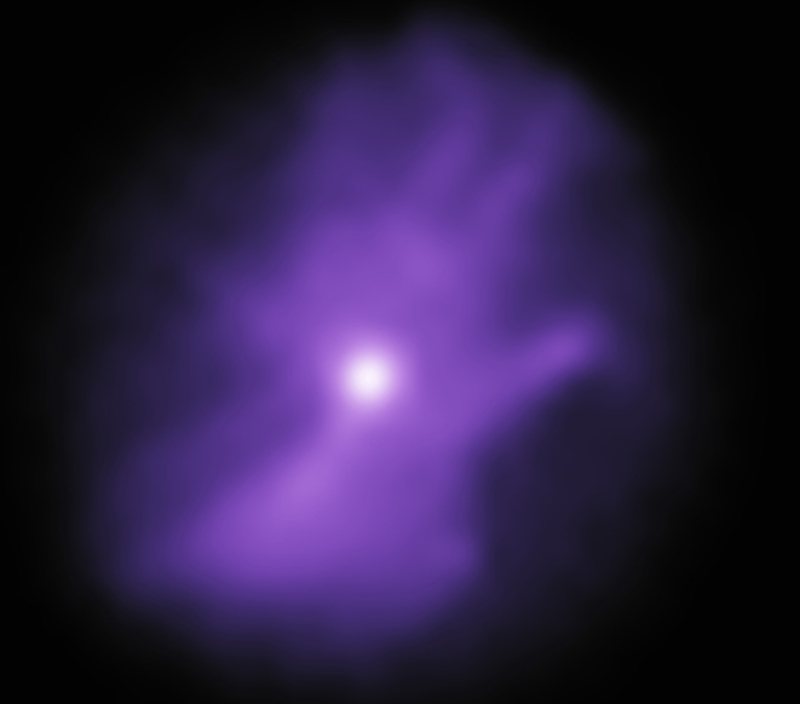
 Credit: NASA/CXC/Stanford Univ./R. Romani et al. (Chandra); NASA/MSFC (IXPE)
Credit: NASA/CXC/Stanford Univ./R. Romani et al. (Chandra); NASA/MSFC (IXPE)
Pointing the Way
One of the first X-ray images ever recorded was of the hand of Anna Bertha Ludwig, the wife of Wilhelm Rontgen, the discoverer of X-radiation. When she first saw the skeletal image, she supposedly stated "I have seen my death" (this was in 1895, a half-century before J. Robert Oppenheimer's similar statement about another world-shaking scientific event). Now we have used X-rays to study another death, the death of a massive star, which left behind a collapsed, rapidly spinning, highly magnetized, ultradense neutron star, or pulsar, know to astronomers as PSR B1509-58. The rapid spin of this pulsar (it makes about 7 revolutions per second), coupled with its enormous magnetic field, produce strong outflows of charged particles of matter and anti-matter that blast into space. These outflows combine to create a structured, high energy cloud around the pulsar, a so-called "pulsar wind nebula" which has the extraordinary appearance of a human hand when viewed in X-rays. The image above is a new X-ray image of this nebula, obtained by the Imaging X-ray Polarimeter Explorer (or IXPE). In this image, the pulsar itself is the bright dot of X-ray emission near the middle of the "palm", while fingers of emission stretch towards the top, and an X-ray jet points from the pulsar towards the lower left of the image. While IXPE lacks the sensitivity to detail seen in X-ray images taken by the Chandra X-ray Observatory, IXPE provides unique information about cosmic objects, since it is sensitive not only to X-ray brightness, but also the polarization of the X-rays as well. Polarization is important, since polarization provides unique information about the spatial structure and physics of the X-ray emitting region. The IXPE observations provide the first-ever map of the magnetic field in the nebula, and measures of how tangled the lines of magnetic force are as they thread through the nebula. The IXPE data show that the X-ray polarization from the jet is particularly small, indicating that magnetic entanglement probably plays an important role in powering the jet.
Published: November 6, 2023
<
HEA Dictionary ● Archive
● Search HEAPOW
● Other Languages
● HEAPOW on Facebook
● Download all Images
● Education ● HEAD
>

Each week the HEASARC
brings you new, exciting and beautiful images from X-ray and Gamma ray
astronomy. Check back each week and be sure to check out the HEAPOW archive!
Page Author: Dr. Michael F. Corcoran
Last modified Monday, 26-Feb-2024 17:46:04 EST


